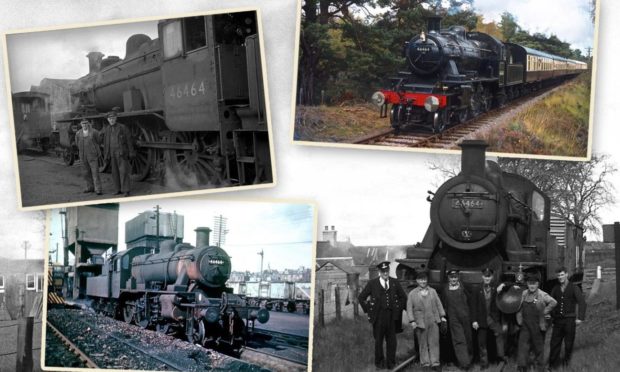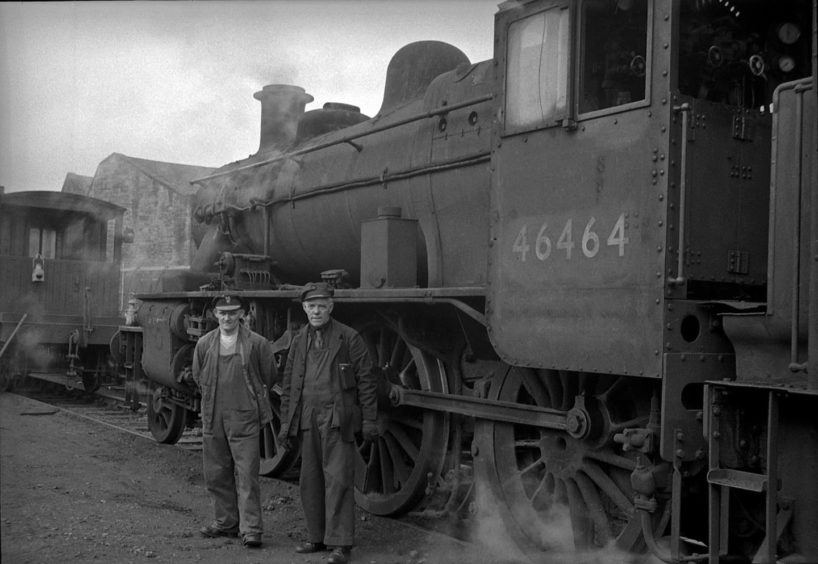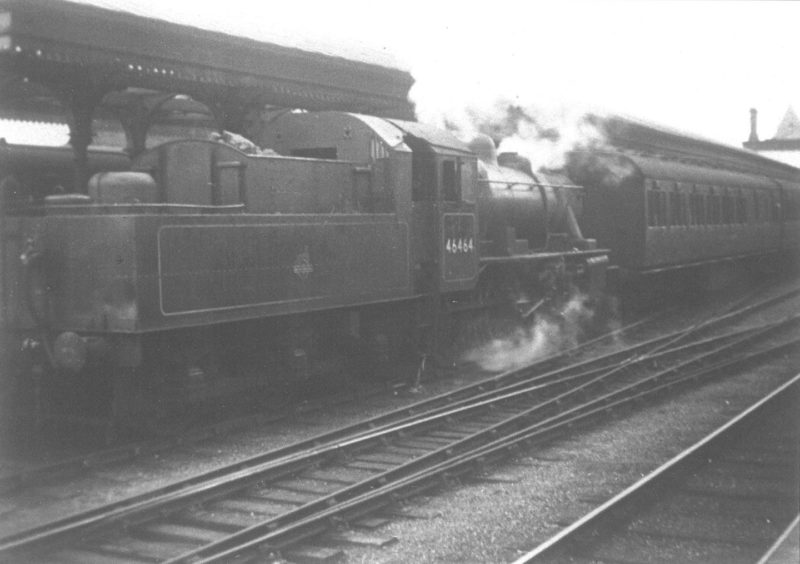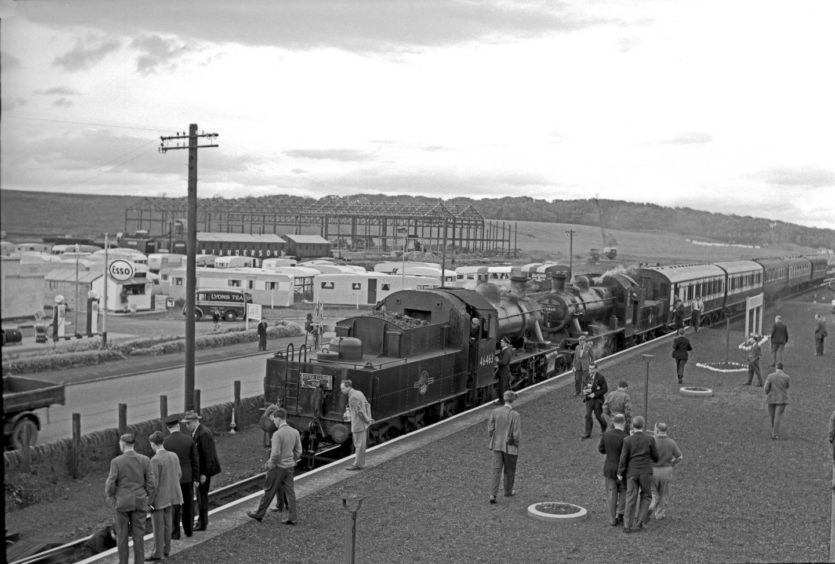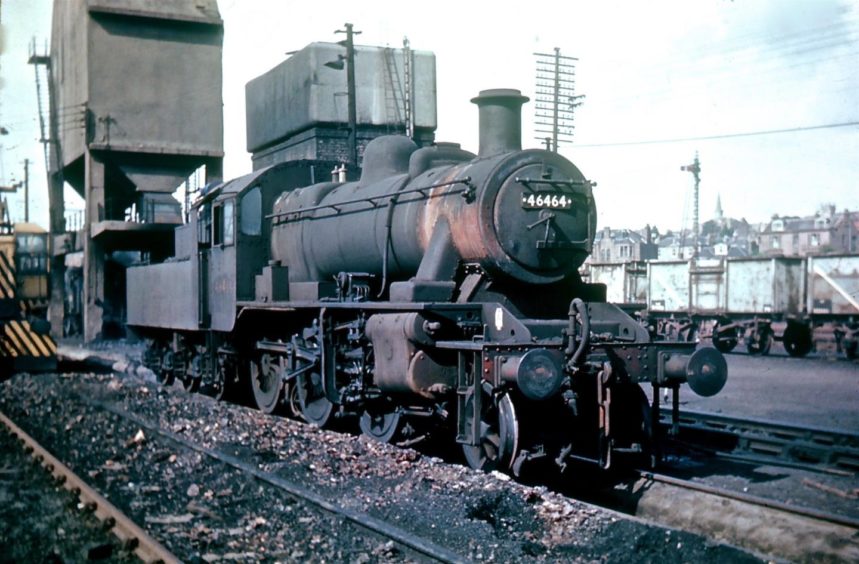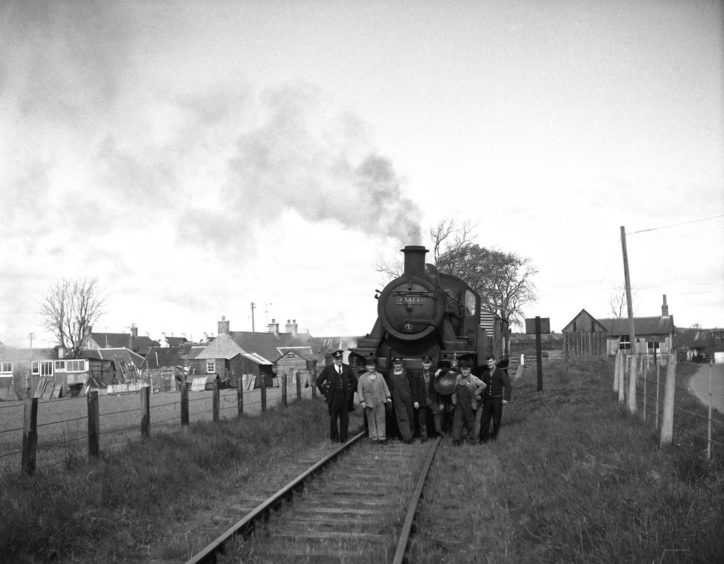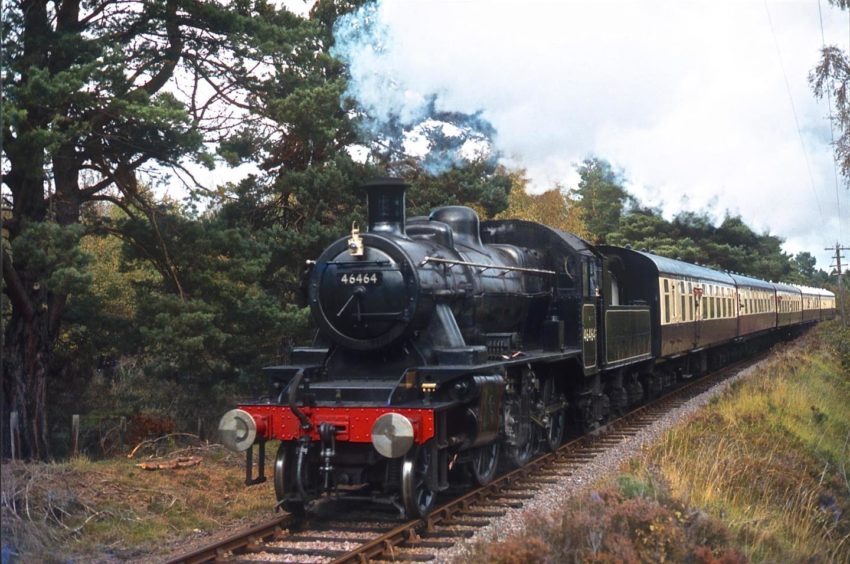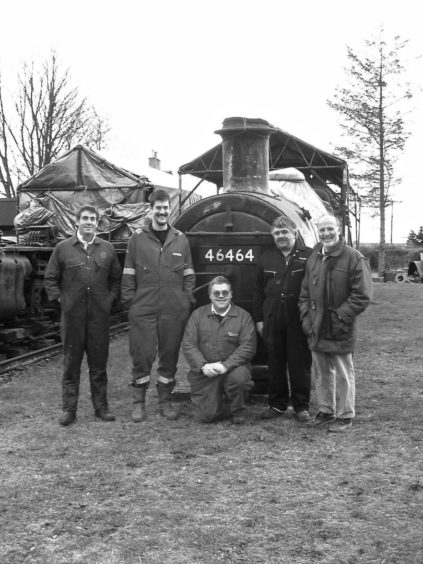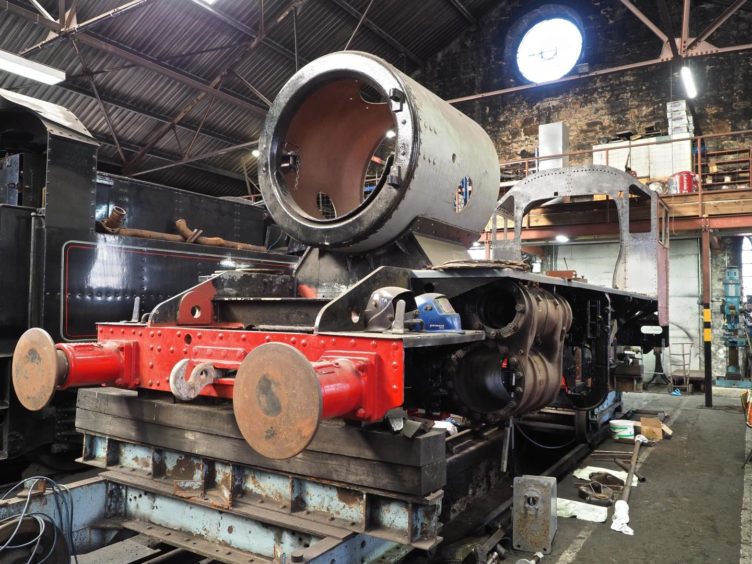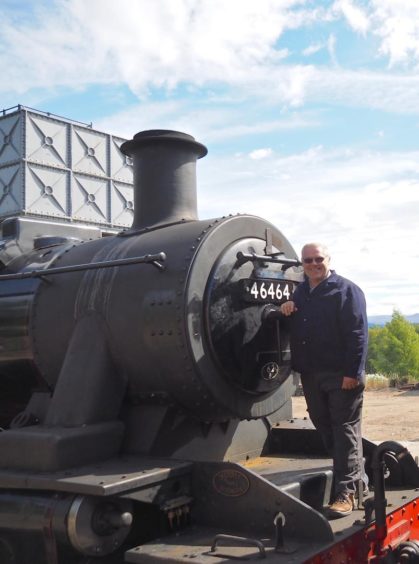The Carmyllie Pilot hauled some of the last trains to run in Angus before she was finally withdrawn from service in August 1966.
On happier duties she worked the first passenger service on the newly reopened Strathspey Railway between Aviemore and Boat of Garten in July 1978.
She was saved from the cutter’s torch and is now being restored to her former glory by a group of enthusiasts, after making more comebacks than Frank Sinatra.
The Carmyllie Pilot started life in Crewe back in 1950
In 1946, two years before the nationalisation of the railways, Henry George Ivatt, Chief Mechanical Engineer of the London Midland and Scottish Railway, introduced a new modern lightweight tender locomotive.
Initial trials of the engine highlighted problems with poor steaming.
These were rectified by fitting a modified chimney with a tapered internal bore to improve the draughting.
The LMS built 20 engines to the new design which were given the numbers 6400-6419 between 1946 and 1947.
A further 108 engines, numbered 46420-46527, were built by British Rail after nationalisation.
Carmyllie Pilot, loco number 46464, started life in Crewe back in 1950 and was the last of a batch of five to be built before production moved to Darlington.
She cost £8,932 to build and was allocated to the Scottish Region of British Railways along with her sister engine 46463.
Both engines were based at Dundee Tay Bridge shed, but were allocated, turn and turn about, to Arbroath.
How did she get her name?
46464 could be found, on many occasions, working the Carmyllie goods service between Elliot Junction and Redford.
It was through this that she became known to the locals as the Carmyllie Pilot.
On August 2 1952 she hauled the very last passenger train from Brechin to Forfar, when she had to stand in at the last minute to replace another failed engine.
This was to be her only visit to Brechin, and indeed the only recorded visit of an engine of her class.
She was briefly allocated to Kittybrewster in 1955.
She worked on the Buchan line to Peterhead, Fraserburgh and St Combs, deputising for the regular engine, 46460, which was known to locals as the Baby Elephant.
The original boiler on the Carmyllie Pilot was changed when the engine was shopped in 1961.
She now carries the boiler from 46465, which spent its working life in firstly Cambridgeshire and then Derbyshire.
She was damaged in Dundee in 1964
Dr Richard Beeching’s infamous report in March 1963 spelled the end of more than 2,300 stations, and around 6,000 miles of railway line.
Country stations and branch lines were axed in the name of progress and steam locomotives would be consigned to the scrapheap.
Some time in 1964 the Carmyllie Pilot was damaged.
She was apparently side swiped by a B1 in Dundee shed and was sent to Inverurie Loco Works for repairs to the LHS crosshead and footplate.
Indeed it was surprising that she was repaired and not withdrawn at this point as by that time steam locomotives were being withdrawn from service in large numbers, and any defect at all usually meant one final trip – to the scrapyard!
After repair she returned to Arbroath and hauled the last train to run over the Carmyllie branch, on May 19 1965.
The Carmyllie Light Railway officially closed to all traffic after 110 years of operation.
She was finally withdrawn in August 1966 after only 16 years in service following British Rail’s decision to replace steam with diesel.
She had been somewhat neglected in the last few years prior to withdrawal.
Saved from scrap and stored in a shed in Dundee
Unlike her sister engine she was saved from scrap by local railway enthusiast Ian Fraser from Arbroath.
Mr Fraser overcame opposition from the council and built an engine shed for his steam traction engine and garden railway in the grounds of his house in Arbroath.
He had worked as a locomotive engineer with the LNER at Darlington, Doncaster and Inverurie loco works and following his retirement he eventually purchased several engines, including the Carmyllie Pilot.
She was presented to Dundee Corporation after purchase.
The initial intention had been to put the engine on display, but she was stored in a shed in East Dock Street between 1967-1975 before being loaned to the Strathspey Railway where she hauled the first scheduled passenger train on July 22 1978 and remained in service there for several more years until she suffered accidental firebox damage.
Mr Fraser wished to have the loco nearer home and after much correspondence with Dundee District Council the locomotive was restored to Mr Fraser’s ownership and left the Strathspey Railway on November 30 1989 to return once more to Brechin.
Sadly, Mr Fraser passed away in 1992.
During the late 1990s some remedial work was carried out to save any further deterioration to the boiler, before a group of enthusiasts got together, and, in July 2000, signed an agreement with David Fraser, son of the original owner.
The dream of a return to steam after 42 years
The Carmyllie Pilot Company Ltd was set up by Robin Taylor, John Yule, Max Maxwell, Ian Hopley and Iain Smith to restore and subsequently operate 46464.
Mr Smith, Cupar and District Model Railway Club chairman, became interested after seeing a photo of the locomotive crossing the River Eden to St Andrews.
The image was taken in 1952 by WJV (Bill) Anderson who was arguably one of the most inspirational and influential railway cameraman in the steam era.
“I caught the steam bug after a couple of visits to Lochty Private Railway in 1980, where I met the late Davy Murray who was also a good friend of Ian Fraser,” said Iain.
“He gave me the job of cleaning out the smokebox on a steam engine and I cycled home looking like a miner who had just come off shift!
“After learning to drive I worked at the Caledonian Railway in Brechin where Max Maxwell guided me in the art of locomotive firing and driving.
“I learned many tasks I never knew I could do and helped operate a couple of steam locomotives on the Brechin to Bridge of Dun line between 1982-1998.
“It was during this time I met the three other members of the Carmyllie Pilot team who also had a love for steam and the rest is history.”
In March 2002 the engine was dismantled and moved from the Caledonian Railway to a private site at Bridge of Dun for a thorough overhaul.
Work has included making new steel running plates, a roof for the tender and a roof for the locomotive, using traditional hot riveting methods.
In 2019, after carrying out much work themselves on the boiler it was sent to Stockton on Tees for further extensive repairs.
The Carmyllie Pilot was returned to the Strathspey Railway in February 2020.
It is hoped that the boiler work will be finished shortly and tested in the next few months.
Iain said: “What makes this project all the more special is that we’ve carried out most of the repair work ourselves where possible, under tents in a field using our own finances.
“This makes her truly our engine and we now hoping that the Carmyllie Pilot will finally return to steam in early 2022 after a break of 42 years.”
